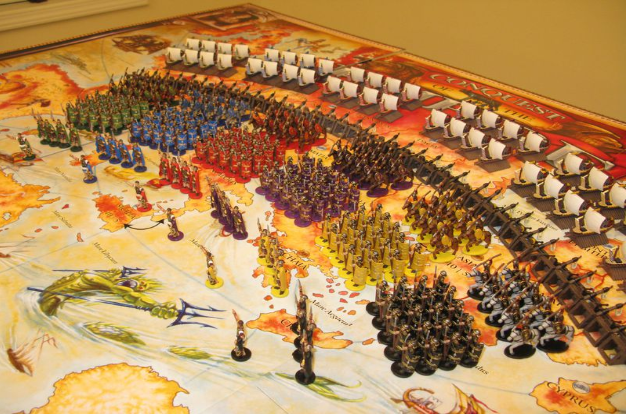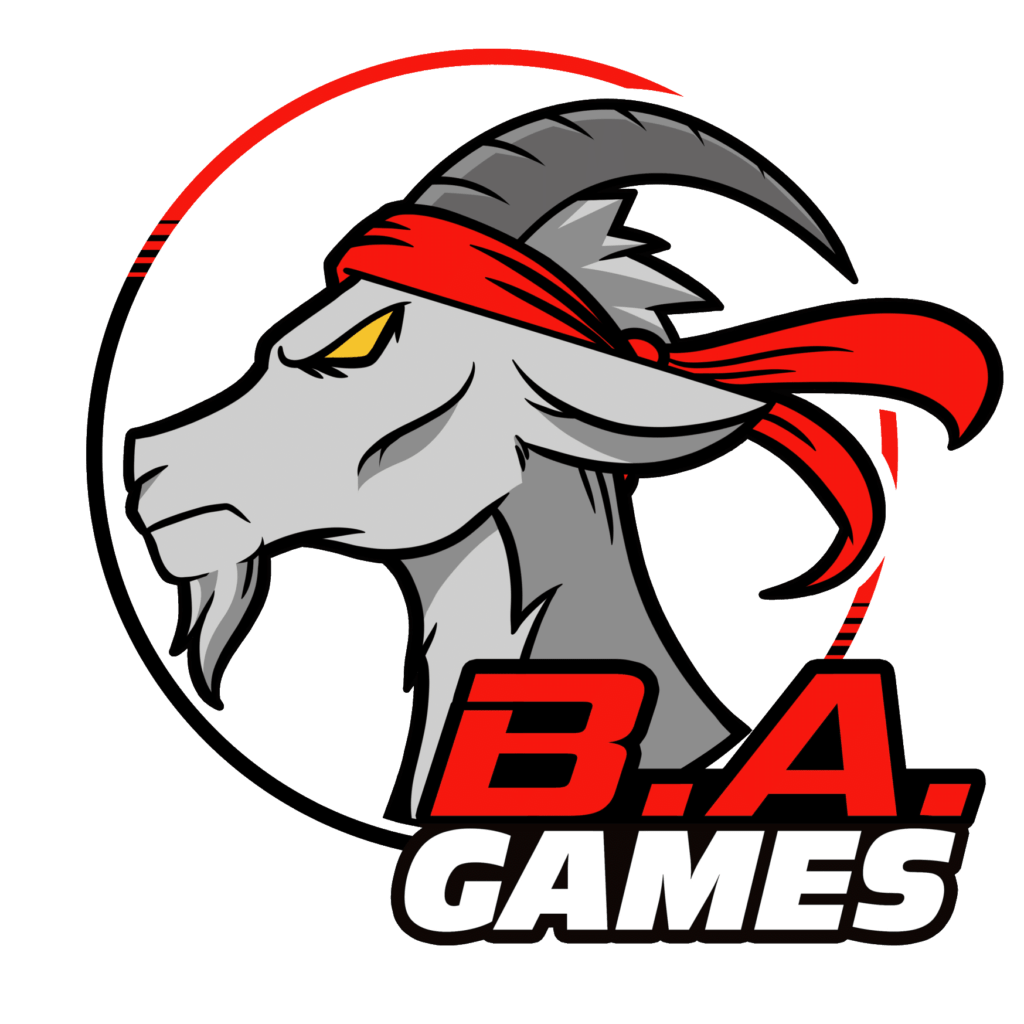Sam “King of the Hilltop”
The old adage that bigger is better is one that I usually like when I play wargames or miniature games. I have always tended towards the armies and factions that have the biggest robots, or at least the ones with the most firepower! However, that adage is starting to lose its appeal to me as I am part way through the process of publishing my own game.
#1) A bigger board game requires more time and more playtests. The more components in a game or the number of different types of interactions can make playtesting it all daunting. Trying to balance this rule with a certain character, that’s easy enough, but now how does that interact with 40 other characters. Oh, well, what about another 50 after that. The more ingredients in the stew, the more complicated it gets but in the end can be very bland or if not balanced properly, a few standout ingredients will cover everything else and all the hard work that was done to get to that point.
Now, larger board games can be AMAZING if time and effort is taken to shape and balance the game. Just know going in, it’s going to be tough. It can be fun, but it will be a long road.
#2) A bigger board game costs more money to not only purchase but also to produce. There are two phases in the design process where this lesson can be seen for me. The first is getting the game quoted for manufacturing. Oh wow, this component costs how much and I need how many? Well, what if I choose a substitute? Okay that’s cheaper but now the game doesn’t look or feel nearly as cool. What if I cut that part all together, changed the rule so it is now part of another component? Yeah, that works but is that too much information for one piece? It’s a full-on brawl when designing a larger game as you have to not only worry about game presence, complexity, and clarity, but you also have to worry about it fitting in a reasonable sized box. A lot of choices to be made there and yes…the struggle is real.
The second moment is when you start contracting a graphic designer and artists. The more components, the more design work needs to be done. The more cards, the more art needs to be finished. Each one of those pieces costs X and the more of those you need, your prices start to climb very quickly. Now, fixed costs like these can be mitigated by moving a lot of copies. An example is if the artwork cost $10,000 and you produced 1000 games, the art broken down per game is $10. Now, if you have 2000 copies, that’s only $5 per game. Between these fixed costs and cutting costs due to producing in bulk, you can see why stretch goals in Kickstarter or another crowdfunding campaign have a financial reasoning for existing.
#3) A larger game requires a larger time to set-up. This needs to be taken into consideration when designing or playing a game, how long is the set-up time. It can be perfectly okay if your game takes 20 minutes to set-up if the game last 4 hours. That board game may not hit the table as often just from the time constraints of play time but it may not be played due to not wanting to spend 20 minutes getting it set-up. It may even be longer if it’s your first time! But that is expected in a large board game if it is within reason. So a few things to possibly consider to decrease set-up times: instructions for each player so that they can set-up their portion of the board, design components to be easily handled, design components to be easily identified, and consider how the game is put away or opened to maximize efficiency of set-up.
I want to make a brief plug for Game Trayz. If you back larger board games on Kickstarter, you have likely seen this name bandied about. They design custom plastic trays in order to best present a game as well as make set-up and break down more efficient. We were able to set-up a meeting with these guys and they were awesome. Knowledgeable and professional. If you are seriously interested in considering this aspect to your game, these guys could be a good fit for you.
You can check them out at:
All in all, is bigger always better in a board game? No, but in the end, it’s all a matter of what kind of experience you want on the table or in the design process. So sometimes, bigger is better.

I Like It Big, I Like it Complicated
Ed “Duke of BAzlandia”
I personally enjoy large board games. There is something about opening a box and punching out all the pieces, reviewing the multitude of decks, and sorting any plastic bits. Many of the board games I owned and grew up with are what I have heard called ameritrash. I personally enjoy large scale boardgames that have a presence, a set of complicated rules, charts, and plastic components. They remind me of the adolescent joy playing games all weekend with my friends and brothers. There is a feeling when you see a game that takes up the whole table and the pieces are spread across the small left over empty spaces. I call this the “presence” of the game.
Lately on Kickstarter there seems to me to be a trend of games that have a massive presence. I feel that it is fairly common enough that on any given month you could find a game being kickstarted that can have a price of anywhere from $100 to $300 and have that larger than life presence. These game tend to have miniatures and an extensive library of add-ons or additional game material. I have even backed one (Horizon Zero Dawn). In many ways this can be a good thing if the game is good and you are a fan of the game, genre, or material being covered. It almost feeds your desire to own all of it.
On the other end I have seen some kickstarted games that have tried to emulate this and it just didn’t work or in my opinion tried too hard to accomplish something that the game does not lend itself to. Trying to make up what the game lacks in content and fun by using add-ons or fancy miniatures. In all I think it will be interesting to see where what I see as a current trend of kickstarted games that are extremely large in sheer amount of contents, presence and price.
I think the biggest thing to ask yourself when designing a game and contemplating its size is does it accomplish the goals you have for the game and does it’s presence go with how the game plays?
Please continue to share this blog, and subscribe for monthly updates.
